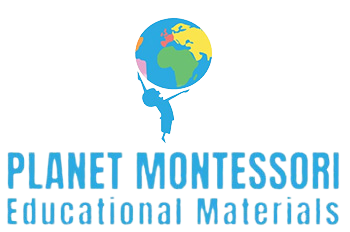- News and Updates
- 0 likes
- 69 views
- 0 comments
- Montessori training, montessori materials
Montessori Tools and Activities Filipino Parents Can Use at Home
Montessori education is not just a teaching method for schools; it can be easily incorporated into your home environment. By introducing Montessori principles and using Montessori tools and activities, Filipino parents can create an enriching learning experience that supports their child's independence, creativity, and natural curiosity.
This article will explore various Montessori educational materials, toddler materials, and sped material that Filipino parents can use at home to foster a love of learning in their children.
Creating a Montessori-Friendly Home Environment
The first step in using Montessori tools at home is to create an environment that is child-centered and stimulating. A Montessori-inspired space should be organized, safe, and accessible.
- Designate a Learning Space: Choose a quiet area where your child can focus on their activities. It doesn’t have to be large—just a small table and chair set is enough to start.
- Use Child-Sized Furniture: Providing toddler materials and furniture that is just the right size for your child encourages independence. Look for tables, chairs, and shelves that children can easily access on their own.
- Natural Materials: Montessori tools are typically made from natural materials such as wood, which encourages tactile exploration. Incorporating items like wooden puzzles and blocks can be a great start.
Montessori Tools and Activities for Toddlers
For toddlers, Montessori learning should be simple, sensory-rich, and hands-on. These tools help young children engage in exploration and improve their fine motor skills. Here are some activities Filipino parents can try:
1. Practical Life Activities
Montessori places great emphasis on practical life skills, which not only teach independence but also help children develop concentration and coordination.
- Pouring Activities: Use a small jug and cups to let your toddler practice pouring water or rice. This activity strengthens hand-eye coordination and fine motor skills.
- Cleaning Activities: Provide a small broom and dustpan for your toddler to clean up after playtime. Simple activities like wiping tables or watering plants also encourage responsibility.
2. Sensory Exploration with Toddler Materials
Sensory activities help toddlers understand their world through touch, sight, and sound.
- Sensory Bins: Fill a bin with rice, beans, or sand, and add scoops and small toys for your child to explore.
- Texture Sorting: Use pieces of fabric with different textures (e.g., cotton, velvet, burlap) for your toddler to sort by feel.
3. Language Development
Introducing language at a young age is a key part of Montessori education.
- Alphabet Cards: Use large wooden or laminated alphabet cards to introduce letters. Encourage your child to trace the letters with their fingers or a pencil.
- Picture Books: Read simple books together to help your child expand their vocabulary. Montessori also suggests using real-life images over illustrations to build stronger connections.
4. Math and Practical Skills with Montessori Educational Materials
Montessori encourages children to explore math concepts through hands-on materials.
- Number Rods: These are colorful rods that children can use to visually understand the concept of quantity and counting.
- Bead Chains: These can be used for learning number sequences and simple addition or subtraction.
Supporting Special Needs with SPED Material
Montessori education is inclusive, and many sped materials are available to support children with special needs. For children with developmental delays or learning difficulties, Montessori methods can be adapted to meet their needs. Some examples include:
- Sensory Tools: Items like textured balls, weighted blankets, and fidget toys can help children with sensory processing issues.
- Adaptive Seating: Special chairs or cushions can support children who have difficulty sitting still for extended periods.
- Communication Tools: Picture cards, sign language charts, or apps for speech development can help children with speech delays.
Montessori Activities for Older Children
As your child grows, you can introduce more complex Montessori activities that align with their developing skills and interests. These activities encourage problem-solving, creativity, and logical thinking.
- Geometric Shapes and Patterns
Use shape-sorting boards and geometric solids to introduce children to basic geometry concepts. - Science Experiments
Simple science experiments like growing plants or observing the water cycle can engage older children in discovering how the world works. - Art and Creative Projects
Montessori encourages the use of open-ended art materials such as colored pencils, clay, and paint. Encourage your child to explore different mediums and express themselves freely.
Where to Find Montessori Materials in the Philippines
In the Philippines, many online stores and specialty shops offer Montessori materials. Whether you’re looking for Montessori educational materials for toddlers or sped materials for children with special educational needs, there are plenty of resources available. Explore our Planet Montessori shop for a variety of high-quality materials tailored to Filipino families.
Conclusion
Incorporating Montessori tools and activities at home can significantly enhance your child’s learning and development. By using simple Montessori materials, creating a child-friendly space, and engaging in hands-on activities, Filipino parents can provide a nurturing environment where their children can grow, explore, and thrive.
For more ideas and resources, visit our Montessori PH resources page to discover Montessori tools, sped materials, and educational activities designed for Filipino families.

Comments (0)